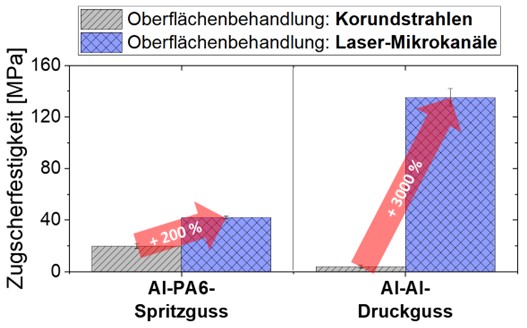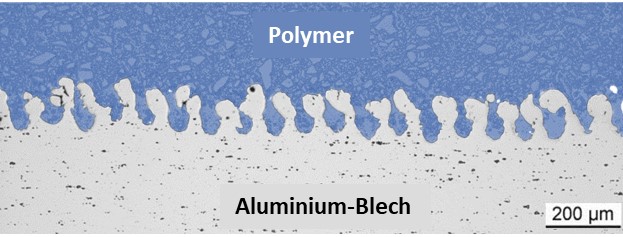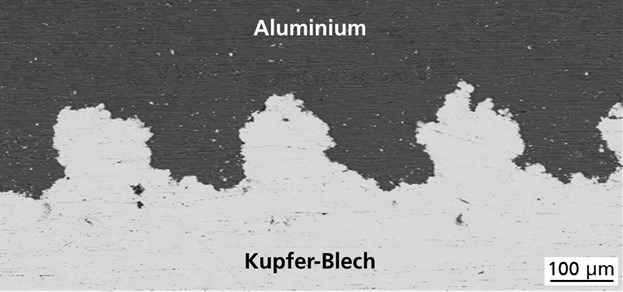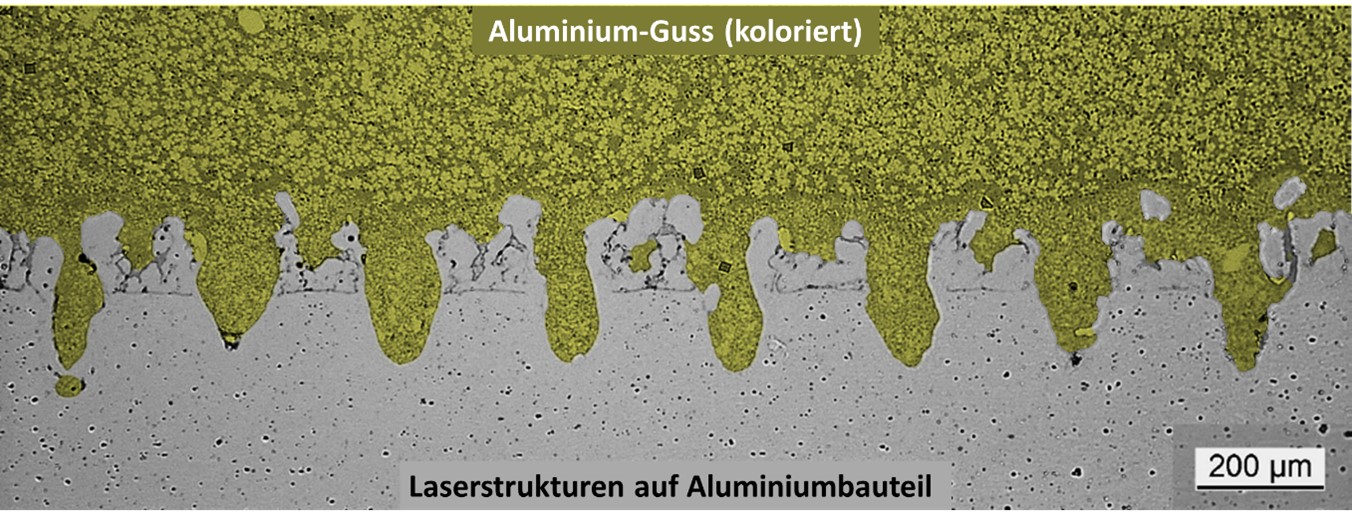Laser technology enabled stable interfaces for metal hybrid casting and plastic injection molding to increase composite strength



Laser technology offers optimal possibilities for the pre-treatment of surfaces. Researchers at Fraunhofer IFAM have succeeded in achieving a significant increase in composite strength in metal-metal, metal-plastic or plastic composites by means of laser pre-treatment. The high interfacial strengths result from positive and non-positive micro-interlocking between the laser-treated component and the infiltrated metal or plastic. Innovative laser-induced channels on components, which enable complete infiltration with melts or plastics, are fundamental. In addition, production time and costs can be saved compared to conventional joining methods by integrating the joining process into the primary forming process.
Challenges of conservative joining methods
Conservative joining techniques, for example using screws or rivets, require several work steps and require increased installation spaces as well as masses in the joining zone to compensate for local force introduction. In metal hybrid casting or plastic injection molding, material bonding of components is hindered by inert surface oxides and rapid solidification times of the melts. One example is aluminum oxide, which cannot be melted by molten aluminum (700 °C) or plastic due to its high melting temperature.
Reliable connections through surface channels...
The solution to the above-mentioned challenges is provided by microscopic, form-fit connections in the joining zone, which are completely infiltrated with the melts and enable homogeneous force transmission. To achieve this, an innovative process is used to create lateral channels in the component surfaces to be joined using standard laser systems. The surface structure created is completely infiltrated with the liquid material in the subsequent metal casting or plastic injection molding process, which generates a form-fit and force-fit bond. This can be specifically adjusted in terms of the bond strength so that, for example, desired limit strengths can be implemented.
... and what the laser makes possible
Laser systems allow the structuring of almost all materials, such as metals, plastics or ceramics. The laser-induced precision of the channel structures allows targeted wetting of the structures and venting of the interface for complete infiltration. Corrosion-related uncertainties caused by rivets or screws with existing gaps are eliminated.
The structuring is sharp-edged and maskless. The forces that can be transmitted via micro-formed joints are defined by the base material properties and the geometries of the microstructures.
Your competent partner in the field of metal-metal and metal-plastic composites
Fraunhofer IFAM has more than a decade of experience in the field of laser, plastics and casting technology. We offer our customers:
- Investigations on commercial laser systems for structuring a wide range of components
- In-depth knowledge and test facilities for casting and injection molding bonding
- Various characterization methods of the interfaces
- Advice on developments / process introduction
- Partner companies for possible implementations
Surface technology is a core competence of the Fraunhofer IFAM. The "Laser Technology" working group develops processes for the surface treatment of various materials on the basis of industrially established or available system components. In the "Plasma Technology and Surfaces" department, the group has comprehensive know-how, analysis methods and complementary surface treatment processes. The fields of application range from automotive engineering, aircraft manufacturing and consumer electronics to medical technology.
 Fraunhofer Institute for Manufacturing Technology and Advanced Materials IFAM
Fraunhofer Institute for Manufacturing Technology and Advanced Materials IFAM